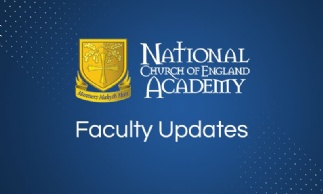Social Sciences - November 2022

Intended curriculum, Teaching and Learning in the classroom and celebrating outcomes.
Social sciences have been trialling the use of ‘Big Questions’ in lessons and encouraging students to really think deeply about issues from the moment they enter the classroom. As the subjects Religious Studies and Personal development are so discussion based, this is a good strategy to challenge students with as soon as they start lessons to engage their thinking and to find out what their opinions are on a range of subjects. This enables staff to find out what students already know and are familiar with, and ensures the students have the opportunity to share their thoughts in a safe space.
The intention of Social Sciences is the develop young people with enquiring minds, so ensuring they have time to reflect on their opinions and hear the views of others is vital to this process. The year 8’s have been challenged this term in Religious Studies with ‘Big Questions’ about whether God exists, if God can be good if there is evil and suffering in the world and if science really holds all the answers to why we exist at all. This is culminating in the annual artwork competition where the students are all creating their own artwork entitled ‘where is God’. This competition will be judged by Mr Brailsford and Kezia, our school chaplain. In order to really celebrate the success of the students, the finalists’ artwork will be displayed in school for everyone to see the different perspectives on the question ‘Where is God’?
The faculty has also been trialling the use of visualisers to really celebrate good work in lessons. Several students have now offered to have their work displayed in the classroom, particularly the GCSE students when completing an exam response to see how the teacher will mark their work. The might sound daunting, but plenty of students have offered to have their work shown to the class. In one RS GCSE lesson this half term, some students were set the challenge to mark the work of the student and feedback what mark they thought the answer should receive and why. This exercise helped the teacher to see what the general understanding was of the mark scheme and in turn was able to give feedback to the student whose work was under the visualiser, but also to the students offering to mark the work to let them know if their understanding of the mark scheme was accurate. This method really helps to celebrate the successes of students but also to support all students in their understanding of the criteria we use for marking in assessments.
